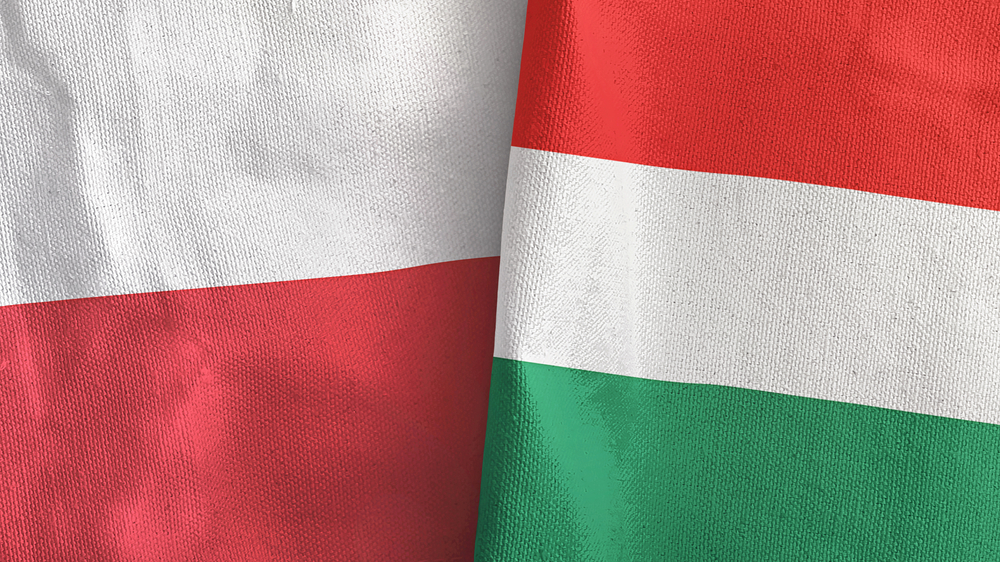OPINIONS
Date: 12 May 2023 Author: Dávid T. Nagy, supervisor: Liliana Śmiech
The economic and bilateral conventions between Poland and Hungary
Polish-Hungarian two good friends, says the saying, but what fundamental economic pillars should we consider when talking about the economic relationship between the two countries? What is the significance of Polish-Hungarian relations in 2023? What developments are there in improving these relationships? The CEO of the Polish-Hungarian Chamber of Commerce answers.

The Polish-Hungarian friendship has centuries of history, from the time of the Arpad dynasty to the present day. During the 1848-49 revolution, they fought side by side, and then Hungary aided thousands of Polish refugees during World War II. ” Hungary and Poland are two ever-living oaks that have grown separate trunks, but their roots run far underground, interconnected, and invisibly intertwined” said Stanisław Worcell , a former Polish politician, about the relationship between the two countries in 1849.
However, the two Central and Eastern European countries can rely not only on their social and cultural past, but also on their diverse economic relationships. Previously, from 1992 to 2004, both countries were members of the Central European Free Trade Agreement (CEFTA), an international trade organization that brought together Central and Southeast European countries. Later, following their accession to the European Union, they became part of the single internal market, where economic relationships between these two countries could flourish in a new trade environment.
The economic activity between the two countries relies on several important pillars, such as regional trade, investments, joint projects, tourism, and economic cooperation within the European Union. Looking at the trade indicators, we can realize that there is significant bilateral trade between Poland and Hungary. In 2022, Hungary had the sixth-largest export trade relationship with Poland among EU countries. This value amounts to nearly $6.45 billion and is mainly in the form of electrical devices and components, plastics, and various technical devices.
From the Polish perspective, Hungary is the 12th largest foreign trading partner, as Hungarian imports from Poland amounted to $8.83 billion in 2022. A significant part of this value ($1.26 billion) consists of electronic and electrical components, of which over half are batteries, television broadcasting systems, and electric motor components. In addition to electronic components, exports of mechanical parts were also significant, such as vehicle parts and motor components.
The reason and nature of the previously described trade environment, as well as the export and import goods, is that foreign investors see great opportunities in the Central and Eastern European countries. Thus, both countries enjoy an attractive investment environment for foreign direct investments (FDI). This is a very important factor, as the level of FDI greatly influences the extent and speed the development of the countries. Poland enjoys great popularity in foreign operating capital investments due to its geographical location and sea access. Hungary, on the other hand, has become a popular destination for South Korea, Japan, and China in recent years thanks to its Eastern Opening strategy.
However, significant investments are also being made between the two countries. It is worth mentioning on the Hungarian side the expansion of MOL, which opened its first MOL Polska filling station in Poland in 2023. Furthermore, during negotiations with PKN Orlen – leading oil refinery and energy company of Poland- an agreement was reached to purchase an additional 410 filling stations.
Smaller investments have also been made, such as the acquisition of the “Szkolne I pedagogiczne” publisher on the Hungarian side, and the acquisition of an 80% stake in Poli-Farbe on the Polish side. These investment relationships are under continuous development by both countries.
In order to gain deeper insights into these relationships, I visited online Dr. Anna Wisniewski, CEO of the Polish-Hungarian Chamber of Commerce. Such an organization existed before World War II, but it was revived in 2019, more than 30 years after the political transformation in Poland.
The initiator and CEO of the chamber, Dr. Wisniewski Anna, thought as follows when founding the chamber: “I found it strange that although politically and historically, our relationship between the two countries is very important, there was no joint chamber. That’s why the institution was formed, to develop and shape bilateral economic relations at the small, medium and large enterprise level, and to support the business network of the two countries.”
She also explained that business life, especially investments, is never characterized by short-term, but rather medium to long-term thinking. From the Polish-Hungarian perspective, it is not necessarily the political emphasis that determines the cooperation between the two countries, but rather the monetary, fiscal, and economic direction of the respective countries, and what kind of economic development messages the region carries.
“These are the areas that the Polish-Hungarian Chamber of Commerce can develop. Bilateral development is the goal so that companies, businesses, and institutions can benefit,” emphasized the CEO.
It is important to note that they do not take a political stance, as the CEO stated: “We operate on an economic and business level.”
According to her, the Polish market is not marginal from the Hungarian point of view, as Hungarian large companies are exploring it, and real estate developers have also appeared on the market.
“We need to talk about bringing this relationship closer” – expressed Dr. Anna Wisniewski her optimism for the final thought.
Poland and Hungary have cooperated on several joint projects over time. We can talk about energy, infrastructure, and innovation cooperation here. Examples of such cooperation include the Three Seas Initiative or the V4, which not only helped regional economic cooperation but also enabled the countries of Eastern and Central Europe to have a greater say in European Union decisions.
However, the regional cooperation between countries does not replace, but complements national policies, diplomatic efforts, and role of the countries within the European Union. It is important to mention that some tension between member states is natural because each leadership of the countries prioritizes its own national interests, which can sometimes differ. However, there are still regional cooperation that aiming the cooperation between the European countries. Three Seas Initiative which is a politically inspired, commercially driven platform between twelve countries allocated between Baltic, Adriatic, and Black seas aiming the shared interest in developing transport, energy, and digital infrastructure connections on the EU’s north-south axis.
When considering the economic situation of countries, we cannot forget another topic, which is tourism. Both countries are rich in cultural and natural heritages, which takes the interest of the tourists. In 2019, more than 244,000 Hungarians visited Poland to explore its natural treasures, cultural heritage, and history. Direct transportation between the two countries, both by train and by plane, helps these trips, as several daily flights operate between the two countries.
Overall, we can say that the relationship between the two countries has long historic past, which today requires continuous nurturing. Poland and Hungary represent proud European values, combined with strong patriotism. Sustainable development is based on maintaining good relationships with neighboring nations. Dialogue must be continued, and every opportunity where the two countries have mutual interests should be exploited. Despite any political disagreements, the paths of the two nations will always cross due to the region’s circumstances, both in good and bad times.
Sources:
1. https://hungarytoday.hu/march-23-the-day-of-polish-hungarian-friendship/
2. https://tradingeconomics.com/hungary/exports/poland
3. https://tradingeconomics.com/poland/exports/hungary
4. https://tradingeconomics.com/poland/exports/hungary/electrical-electronic-equipment
5. https://kki.hu/en/hungarys-eastern-opening-political-and-economic-impacts/
6. https://www.portfolio.hu/befektetes/20221201/lezarult-a-gigauzlet-a-molnal-tobb-szaz-lengyel-kutat-vasarolt-az-olajceg-582672
7. https://v4.mfa.gov.hu/page/visegrad-cooperation
8. Foreign inbound tourism to Poland and Hungary during the COVID-19 pandemic times – comparing the solutions and outcomes – Ewa Bąk-Filipek1, Gábor Szalkai2, Katarzyna Podhorodecka
Support Us
If content prepared by Warsaw Institute team is useful for you, please support our actions. Donations from private persons are necessary for the continuation of our mission.
All texts published by the Warsaw Institute Foundation may be disseminated on the condition that their origin is credited. Images may not be used without permission.

















